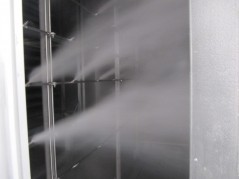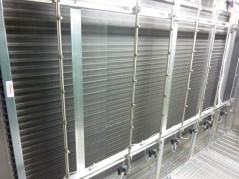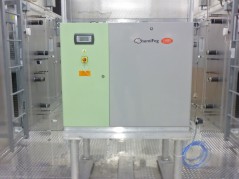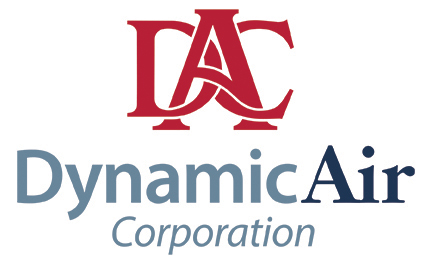ASHRAE regulation 170-2013 has been updated with an addendum, which changes the requirements on the technology needed to humidify hospital environments, allowing the use of adiabatic humidifiers.
Historically, humidification in hospitals and particularly in operating rooms has almost always been provided by isothermal humidifiers, which produce steam. Steam is notoriou sly a natural disinfectant, as most pathogens are immediately deactivated when exposed to temperatures as high as 100°C; furthermore, steam is safe in terms of spreading contaminants, as it does not carry bacteria nor other microorganisms as droplets of water may.
sly a natural disinfectant, as most pathogens are immediately deactivated when exposed to temperatures as high as 100°C; furthermore, steam is safe in terms of spreading contaminants, as it does not carry bacteria nor other microorganisms as droplets of water may.
On the other hand, steam humidification is also the most expensive in terms of running costs, as it requires a high amount of energy to bring water to boiling point and turn it into steam. When this process is performed by immersed electrode humidifiers or heater humidifiers, which consume electricity, it can become extremely costly, especially for large hospitals with high humidification loads. When available, it would be better to use gas-fired humidifiers due to the lower cost of the energy source.
A significant change to this status-quo has been made by the new ASHRAE regulation, allowing the use of adiabatic humidification such as those provided by Carel inside healthcare facilities, with important consequences on energy consumption.
The most adv anced adiabatic humidifiers have reached a level of hygiene very close to steam, while bringing a huge decrease in operating costs! Isothermal humidifiers by nature consume about 800 W of energy per l/h of humidity produced, while high pressure adiabatic atomisers consume just 4 W of electricity – needed to operate the pump – to deliver the same capacity.
anced adiabatic humidifiers have reached a level of hygiene very close to steam, while bringing a huge decrease in operating costs! Isothermal humidifiers by nature consume about 800 W of energy per l/h of humidity produced, while high pressure adiabatic atomisers consume just 4 W of electricity – needed to operate the pump – to deliver the same capacity.
 Not all adiabatic humidifiers are suitable for healthcare facilities however: only high pressure atomisers with certain features to safeguard hygiene level are allowed. These features include the use of reverse-osmosis to treat the water, UV-C sterilisation, sub-micrometric filtration and moisture eliminators; water in the piping must be continuously circulated or drained completely if not in use.
Not all adiabatic humidifiers are suitable for healthcare facilities however: only high pressure atomisers with certain features to safeguard hygiene level are allowed. These features include the use of reverse-osmosis to treat the water, UV-C sterilisation, sub-micrometric filtration and moisture eliminators; water in the piping must be continuously circulated or drained completely if not in use.
For more information on Carel and Adiabatic Humidifiers:
Related Blog Posts:
Ask Rick: What is adiabatic humidification?
High Pressure Water Atomizing Humidifier | Energy Savings
Ask Rick: How does a high pressure atomizing humidifier work?






Leave a Reply